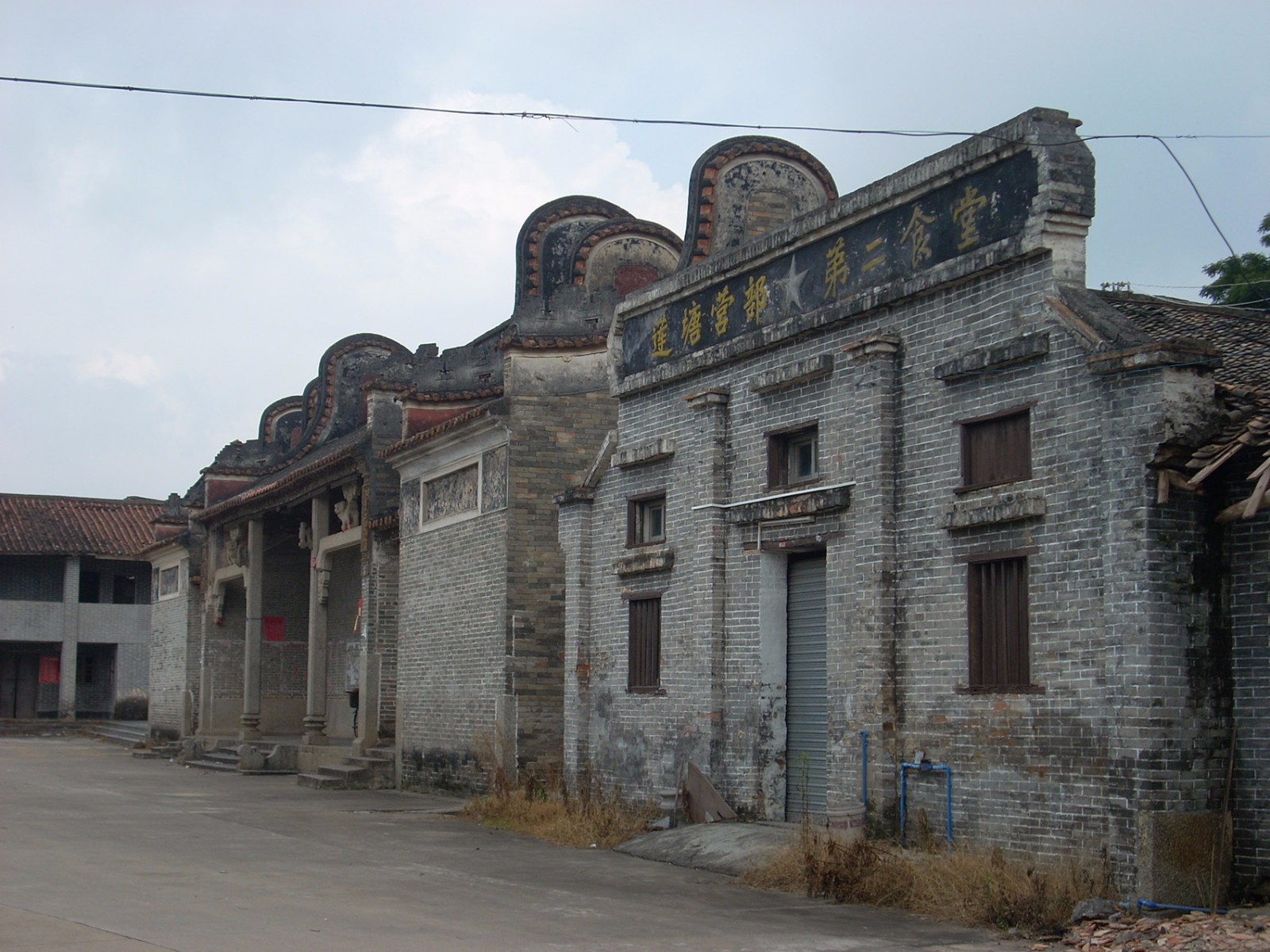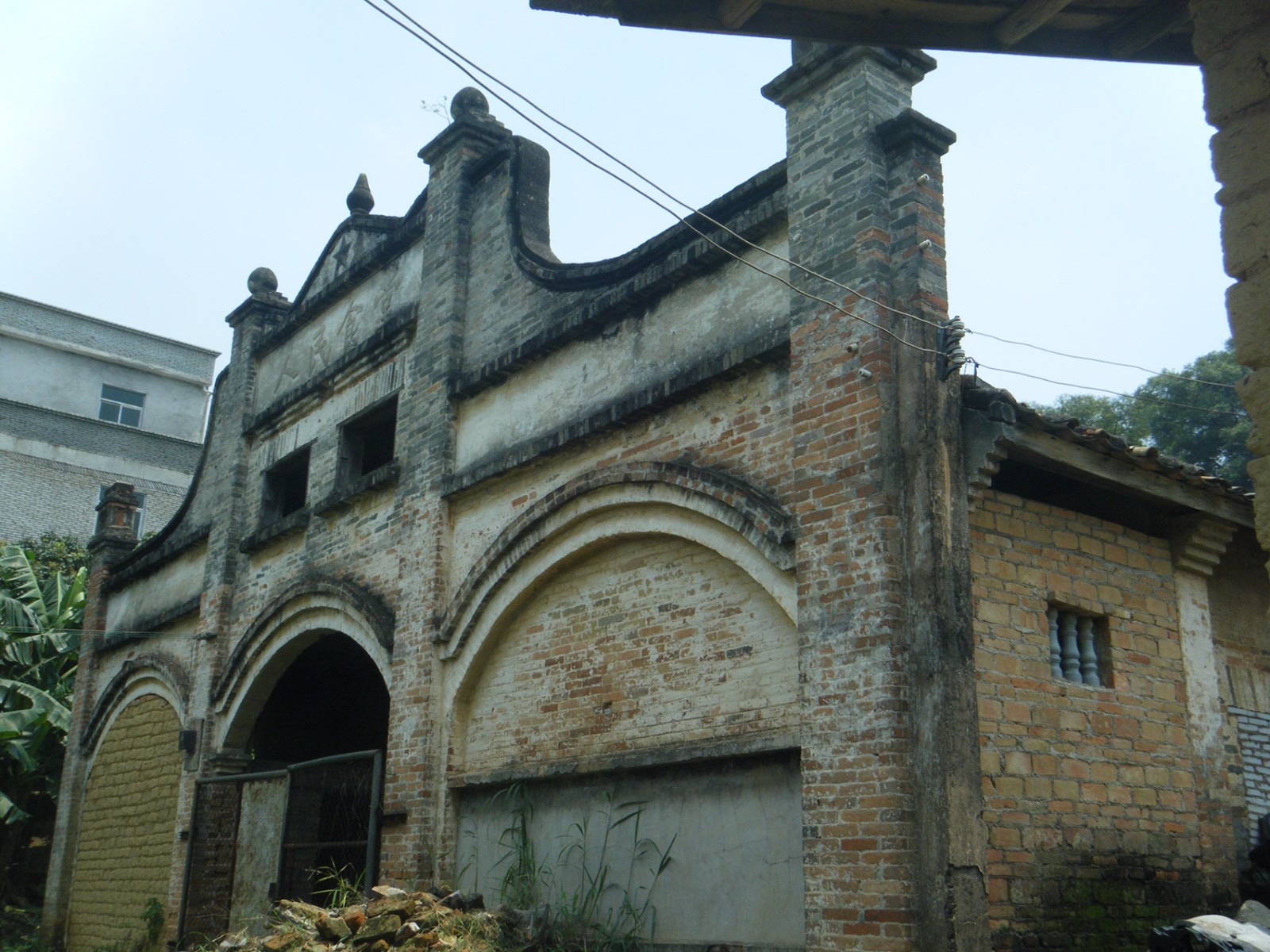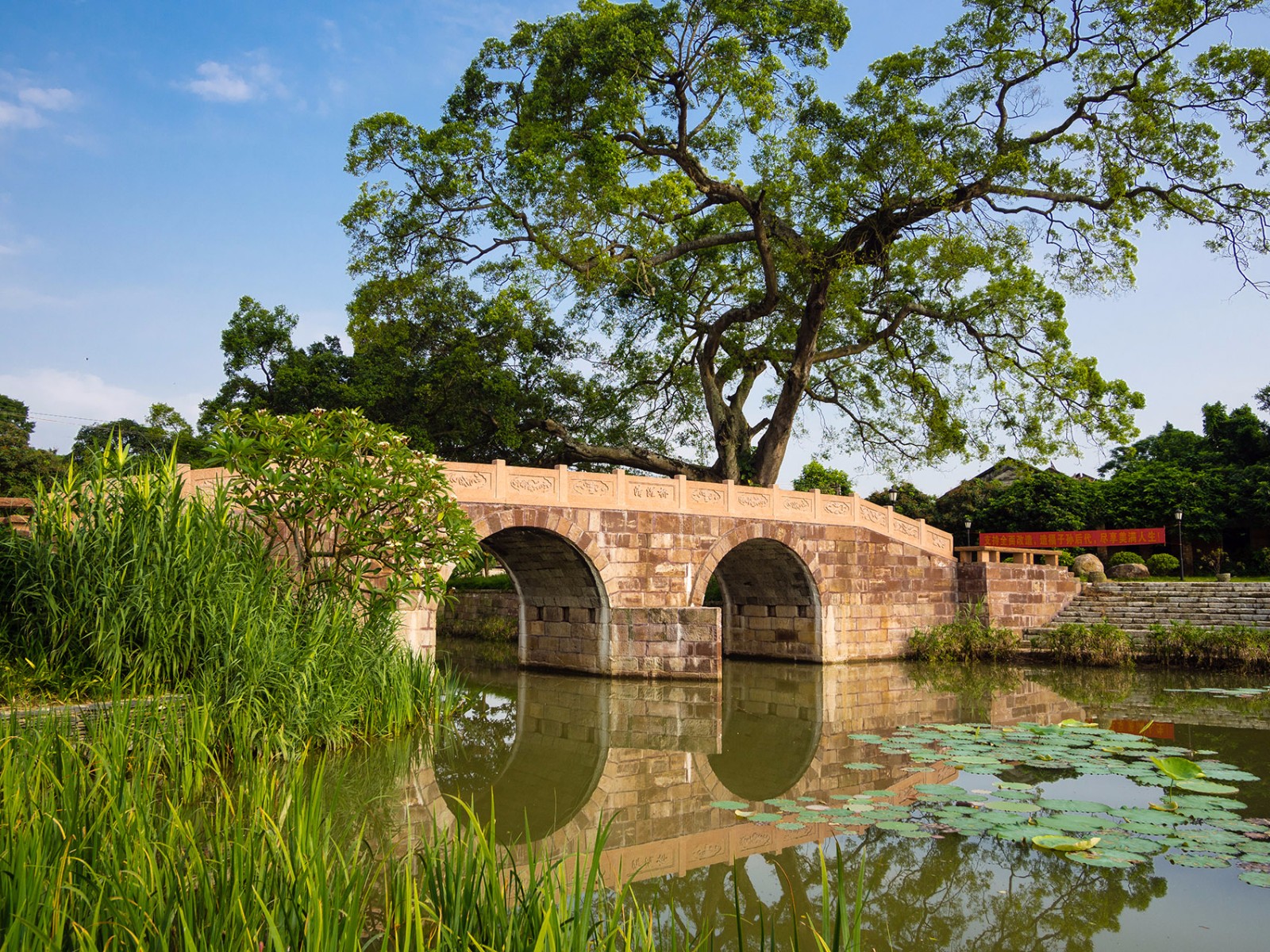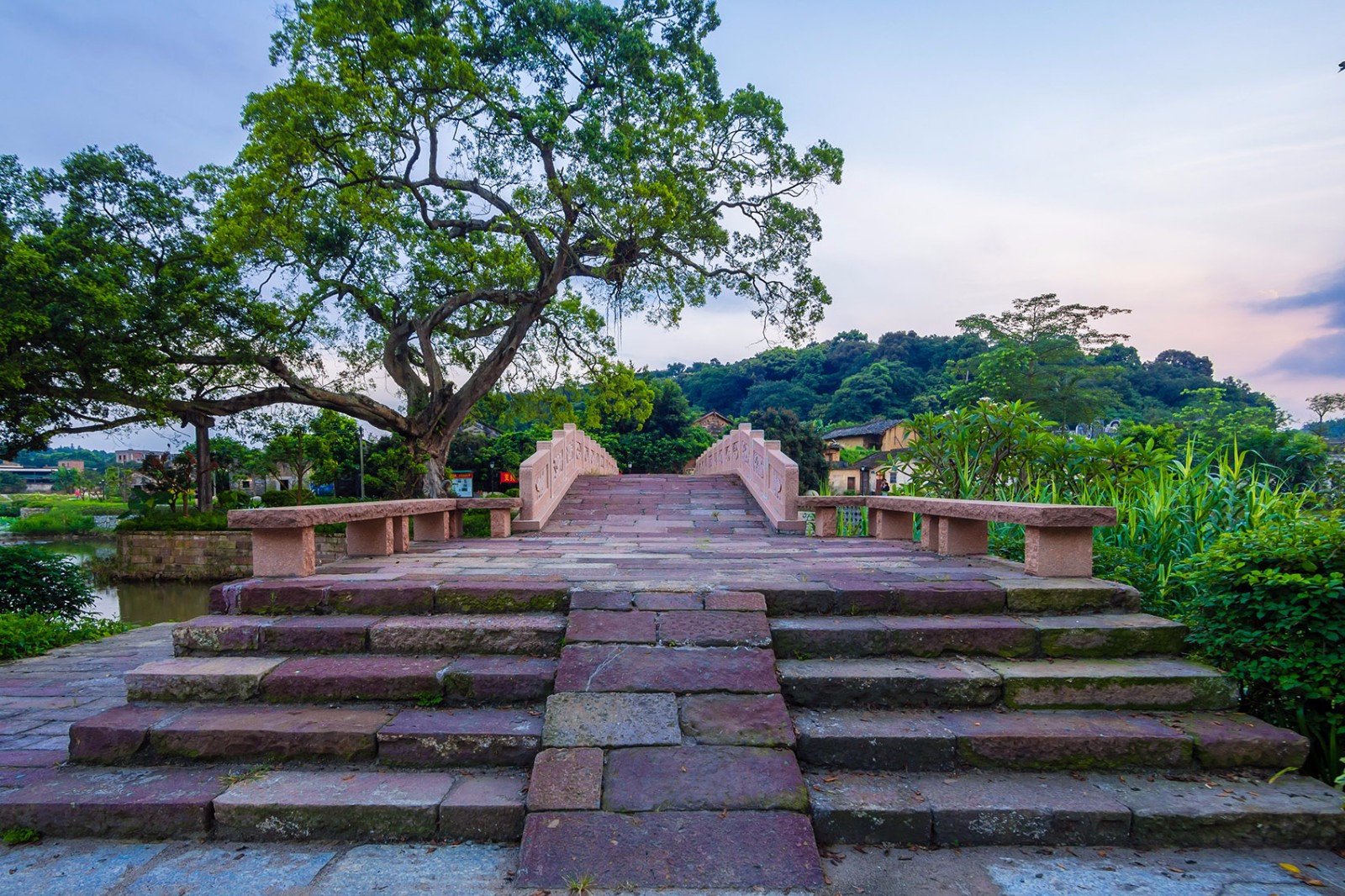Protection and Reconstruction Design of Liantang Ancient Village in Guangzhou, Guangdong P
In the Ximen Building of Liantang Village, there are a group of old men aged 60 to 90 who sit quietly smoking cigarettes and follow the occasional layman. They worked and watched in the village, witnessing every moment of Liantang village that has lasted to this day. You can chat with them, pursue local history, watch local traditional crafts, or experience the joy of lotus picking by yourself.
▼Present Situation of Liantang Village before Reformation


origin
The Liantang Village in Luogang District has a history of more than 700 years. It is the first residential village in South China where the Chen clan migrated from Zhujie Lane to the south. There are many historical buildings in the village. There are still south towers at the head of the village and North towers at the end of the village (both buildings were destroyed for theft protection, leaving only foundations). There are tombs of Chen Yanyue in the east of the village, and Chen Yanyue is one of the first ancestors of Chen in Guangdong Province in the Song Dynasty. Sometimes there are Qing Dynasty buildings such as Sichengong Temple, Hongyou Jiacun, Luozu Jiacun, Xiaotangjiacun, Jichang Bookstore and many ancient shops. There are five ancient alleys: Ronghua Li, Renli, Zhonghe Li, Ping'an Li, Chang'anli, historic buildings with Lingnan style, ancient banyan trees and ancient villages of nearly 20,000 square meters.
▼Historic Buildings in Villages


Among the historical buildings in the village, "Shisi Chen Temple" was built in Guangxu period of Qing Dynasty. Its history is similar to that of the famous Chen Temple in Guangzhou. "Before the vast expanse of culture, people were only chess pieces; the courtyard's place, the courtyard's sky, was the chessboard of history and time." Standing in the courtyard of the ancestral temple, I feel the vicissitudes of the wind and rain for hundreds of years. Villagers will also set up stage in ancestral temple square and organize folk exhibitions, tours and festivals.
▼Ancestral hall square

Liantang Village was built around Xuanwu Mountain, with a comb layout. The ancestral temple is backed by Xuanwu Mountain and has a pond in front. Xuanwu Mountain is connected with Case Mountain to form a corridor axis, with left auxiliary and right plutonium in front. For hundreds of years, the people of Liantang have never cut down their "backing hills" - the grass and trees of Xuanwu Mountain at will; they do not build houses to occupy the open space at the entrance of ancestral temples; they do not fill lotus ponds surrounding villages; they do not build houses to cover ancestral temples in the direction of the axis of ancestral temples... This is not only the respect for the land from the heart, but also the awe of the water plants in the environment.
▼Shi Sichen Temple

Liantang Village was built around Xuanwu Mountain, with a comb layout.
The ancestral temple is backed by Xuanwu Mountain and has a pond in front. Xuanwu Mountain is connected with Case Mountain to form a corridor axis, with left auxiliary and right plutonium in front. For hundreds of years, the people of Liantang have never cut down their "backing hills" - the grass and trees of Xuanwu Mountain at will; they do not build houses to occupy the open space at the entrance of ancestral temples; they do not fill lotus ponds surrounding villages; they do not build houses to cover ancestral temples in the direction of the axis of ancestral temples... This is not only the respect for the land from the heart, but also the awe of the water plants in the environment. _Shi Sichen Temple
▼Lotus ponds surrounding villages

▼A Survey of the Landscape Around Lianhuatang

In terms of specific design techniques, the following principles are followed: local customs, traditional elements, modern techniques and handicraft traces. In terms of design content, we should carry forward traditional folk culture, build stage and ancestral hall square so as to organize folk custom exhibitions, tours and festivals. By digging deeply into cultural connotations such as Presbyterian Club, we should highlight the cultural characteristics of the ancient village, display the authentic culture of local traditional crafts, lotus pond picking, Festival customs, academies and ancestral halls, and so on, so as to add humanities to the tourism of the ancient village. Breath. In terms of Engineering design, the project has carried out research and innovation in the recycling of old materials, the masonry structure of stone arch bridges, and the water purification measures of lotus ponds, so as to realize the splendor of rural life in high-quality natural environment.
▼Hydrophilic platform

▼A ladder to the shore

▼Wall bricklaying details

▼Stone Bridge Connecting the Two Sides of Liantang


▼Stone Bridge under Big Banyan Tree


▼Detail of bridge cavity

Preservation of Traditional Lingnan Water Township Characteristics
Maintaining the original architectural features of Liantang Village to the greatest extent and making proper restoration; building additional ancient stage, laundry platform, green brick and rubble low wall to reproduce the life scene of the ancient village; rebuilding ancient stone bridge with Lingnan characteristics by modern stone dry hanging technology; excavating and utilizing original brick and tile plants, flagpole and stone benches to make it glow with new vitality; planting rich vegetation and planting fruit trees, stone bowls and stone benches all over the country. Lingnan grass, trees and flowers, the scent of lotus in the pond is striking; while retaining the ancient banyan trees that witnessed the history of Liantang village, the more far-reaching significance is our consideration of creating the story of the ancient village.
▼Restored Ancestral Square

Liantang Ancient Village has a good natural geomancy pattern. By digging deep into the natural resources and the spirit of place, the design protects the precious landscape pattern of villages and provides the stage of cultural occurrence for villagers, thus promoting the protection and development of rural natural and cultural heritage; providing tourists with rural life experience and natural scenery experience tour line can effectively convey the protection of traditional culture and natural resources. To protect the significance, we must coordinate the social collective consciousness of co-construction, development and protection.
▼Looking at the Temple Square at a small pool

Brick by tile, fireworks on earth: flowers and grass, beautiful scenery of lotus pond. Walking through the ancient villages, butterflies are hidden in flowers, longan fruits are full of branches, or the sun is mild, lightly whitewashed with ancient stone alleys; or when the rain calls, the countryside is quiet and beautiful. This is where the story happened.
▼Children chasing and playing in front of ancestral temple square

▼Two little girls crouched by the pool to catch insects

The environmental renovation project of Liantang Village in Luogang District of Guangzhou City is the first demonstration sites to implement the construction of "beautiful countryside" in Guangzhou (one of 14 demonstration sites at the municipal level) and the renovation of "three old" villages. After the completion of the project, it has won unanimous praise from all walks of life, the local villagers unanimously recognized it, and the provincial and municipal leaders have given high evaluation after many visits. He has won the second Silver Prize for Lingnan Characteristic Planning and Architectural Design in Guangdong Province, the Aijing Prize for Top Ten Landscape Design Award in 2014, the Urban Planning and Design Award, and the Mercure Award in 2014, the first prize in the most beautiful tourist resort in China.
▼General layout




